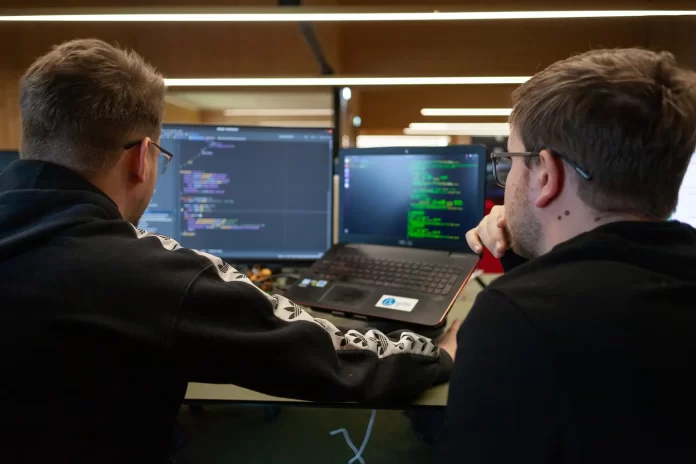The role of a competent technical director is crucial in the early stages of a project. They must be able to identify and correct minor errors before they develop into major issues that could derail the entire project. Unfortunately, some technical directors make mistakes that can negatively impact the project. In this article, we will explore the five common mistakes CTOs make when leading teams in the early stages of a project and provide solutions to these issues.
Mistake #1: Misunderstanding of Business Objectives
The most common mistake CTOs make is their misunderstanding of business objectives. In some cases, CTOs tend to focus solely on the technical component of the project and leave the business aspect to the product managers. This separation can result in developing something completely different from the original project’s purpose, which can lead to critical issues in the later stages of the project.
Solution:
To avoid this mistake, CTOs should be involved in business tasks and work together with product managers to analyze tasks in the early stages of development. Building a competent strategy and planning, managing the recruitment and development of the team can help align technical and business objectives. Involving CTOs earlier in the project can also help ground product managers’ ideas in reality, making them easier to implement.
Mistake #2: Formation of a Team “for Themselves”
CTOs should select a team based on their skills and experience and align them with the project’s business objectives. Hiring a team based on comfort levels is a mistake that could put the project at serious risk. Another common mistake is hiring inexperienced employees who are unlikely to meet the project’s requirements.
Solution:
CTOs should have a clear vision of what kind of team is needed for the project and what skills they should have. This can be achieved by developing a hiring strategy that is tied to the technology strategy, which, in turn, is built on the basis of business objectives. Additionally, CTOs should work closely with HR to identify potential candidates and participate in the hiring process. Analyzing the probationary period, holding face-to-face meetings, and collecting feedback from colleagues about new employees can also help ensure that new hires are a good fit for the team.
Mistake #3: Work Processes Tied to the Technical Director
CTOs sometimes become the bottleneck of the project by closing many processes on themselves, which slows down the project and makes it dependent on their presence. This mistake is often due to the technical director’s distrust of employees or to “insure” their position in the project or company.
Solution:
To solve this issue, CTOs must select suitable people and delegate specific areas of work to them. Trust in the team is critical for well-coordinated work, and the timely delegation of work helps to build trust. Delegating responsibilities also ensures that the project will not come to a halt if the technical director is unavailable for any reason.
Mistake #4: Over-Reliance on Technologies
Over-reliance on technologies is another mistake that CTOs make, particularly in the early stages of a project. While technology is essential for the success of the project, CTOs should be cautious and not overemphasize the technological aspect at the expense of other essential project elements, such as design and user experience.
Solution:
CTOs should strike a balance between technological advancements and the business objectives. They should also consider the project’s budget and assess the effectiveness of investing in a particular technology. CTOs should prioritize user experience, design, and other elements essential for the project’s success, rather than solely focusing on technological advancements.
Mistake #5: Absence of Technological Strategy
One of the most serious errors that a technical director can commit is the failure to create a technological strategy. The formation of a vision for the growth and development of the project is one of the main responsibilities of the technical director. The absence of a strategy often leads to chaotic progress, and the team is perpetually playing catch-up, ill-prepared for the changes demanded by the situation.
The solution to this error is the development of a technological strategy. Depending on the project, the strategy need not be a magnum opus of sorts, but rather, it should be a technical outline that is discussed with the business. This outline provides the basis for solving business problems. Initially, it is essential to engage the product owner in discussions to understand the requirements, functionality expectations, and the business needs that the product should cover.
Mistake #6: Unwillingness or Inability to Work “Hands-On”
This situation can become particularly problematic if the project team is small. Unfortunately, sometimes, technical directors are primarily theorists who perform the functions of a project manager rather than a specialist with expertise in technology.
The solution to this problem is to recognize that the unwillingness or inability to work “hands-on” can be a critical issue. In this case, changing the technical director may be necessary. Just as it is difficult to win a race when an athlete specializes in chess, it is challenging to lead a technical project without sufficient practical skills.
Bottomline
It is crucial to identify and eliminate technical department errors early on in the project’s lifecycle before they become fatal and adversely affect the entire project. A technical director must maintain good communication with the founders of the business, exercise prudence when selecting personnel, and trust their team to handle tasks independently while also delegating responsibilities. If required, a technical director should not hesitate to work “hands-on.” The development of the technological strategy for the project is one of the primary responsibilities of the technical director, and their ability to adequately evaluate business needs and their department’s contribution can help avoid errors in the project’s initial and subsequent stages.

